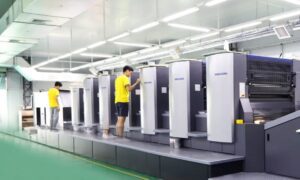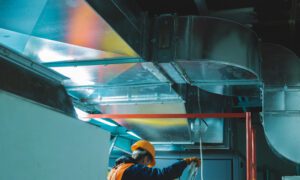Paper air fresheners have become ubiquitous in today’s world, adorning vehicles, homes, and various spaces with their pleasant fragrances. Behind the seemingly simple product lies a complex web of production processes and techniques that paper air freshener manufacturers employ to create these aromatic delights. This article explores the multifaceted methods and innovative technologies that these manufacturers utilize for printing, cutting, fragrance application, and packaging, shedding light on the craftsmanship that goes into crafting each air freshener.
Printing Techniques
One of the initial steps in paper air freshener production involves printing captivating designs and images on the paper substrate. The chosen visuals not only enhance the aesthetic appeal but also serve as a canvas for branding and storytelling. Advanced printing techniques like digital printing and offset printing are commonly used. Digital printing enables the swift customization of designs, allowing manufacturers to cater to various preferences efficiently. On the other hand, offset printing is ideal for large-scale production, ensuring consistent and high-quality images.
Cutting and Shaping
Once the designs are imprinted, the next step is precision cutting and shaping. Air freshener companies employ cutting-edge technologies such as laser cutting and die-cutting machines. These technologies ensure the accurate and intricate shaping of the paper substrate, resulting in a variety of shapes and sizes, from the classic tree shape to more elaborate forms like animals, symbols, or custom designs. This stage requires a delicate balance between precision and efficiency to ensure uniformity in the final products.
Fragrance Application
The heart of a paper air freshener lies in its fragrance. Applying fragrance to paper requires specialized techniques to ensure optimal scent diffusion and longevity. Manufacturers often use methods like the gravure printing process or applying fragrance oils using micro-encapsulation technology. Gravure printing involves transferring fragrant ink onto the paper through engraved cylinders, allowing for controlled and consistent fragrance release. Micro-encapsulation, on the other hand, encapsulates fragrance molecules in microscopic capsules, ensuring a prolonged scent experience.
Micro-encapsulation not only extends the lifespan of the fragrance but also adds an element of interactivity. When users gently rub or press the paper, the capsules rupture, releasing bursts of scent. This unique engagement enhances the user experience and contributes to the overall appeal of the product.
Packaging Innovations
Packaging serves a dual purpose: protecting the paper air fresheners and enhancing their visual appeal. Manufacturers employ various packaging techniques to achieve both goals. Sealing individual air fresheners in airtight pouches helps preserve the fragrance until the product is ready for use. Additionally, innovative packaging designs, such as clear windows or eco-friendly materials, allow consumers to preview the product while being conscious of sustainability.
Furthermore, companies often leverage creative packaging to distinguish themselves in a competitive market. Custom shapes, vibrant colors, and unique packaging structures can transform the air freshener into a collectible item or a personalized gift. This integration of design and functionality showcases the manufacturers’ commitment to delivering a complete sensory experience to the consumer.
The Role of Technology
In recent years, technology has revolutionized paper air freshener production. Automation has streamlined processes, improving efficiency and reducing human error. Computer-aided design (CAD) software enables designers to create intricate patterns with precision, which are then translated into cutting instructions for machines. Similarly, fragrance formulation software assists in creating balanced and captivating scents, ensuring consistency across batches.
Air Freshener Company Case Study: ScentCrafters Innovations
ScentCrafters Innovations, a leading air freshener company, exemplifies the integration of advanced technologies into their production processes. The company utilizes 3D printing for prototyping custom shapes and designs, allowing for rapid iteration and client feedback. This approach ensures that the final product aligns with the client’s vision.
Furthermore, ScentCrafters Innovations has pioneered the use of augmented reality (AR) in their packaging. Customers can scan a QR code on the packaging, triggering an AR experience that showcases the fragrance’s ingredients and provides a virtual walkthrough of the production journey. This interactive approach not only educates the consumer but also deepens their connection with the product.
Conclusion
The creation of a paper air freshener involves a symphony of processes and techniques, blending artistry with technology to deliver a product that engages multiple senses. From the initial printing of designs to the precise cutting and shaping, followed by the intricate fragrance application and innovative packaging, each step plays a pivotal role in the final product’s appeal. With advancements in technology and the ingenuity of air freshener companies like ScentCrafters Innovations, the paper air freshener industry continues to evolve, promising even more delightful and immersive sensory experiences in the future.



































